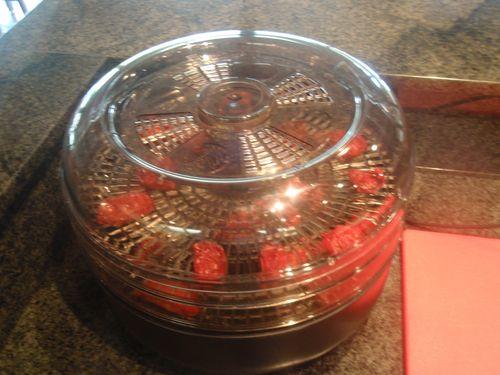
Dehydrated tomatoes, part 2

I wanted to update you on how to store tomatoes once you dry them. If you remember from my last post, I dried ripe tomatoes in our dehydrator to preserve them for winter.
I checked them the next day and, surprisingly, they were still kind of soft. So I let them go a few more hours (after I rotated the trays, since our dehydrator doesn’t have a fan. If you’re thinking of buying a dehydrator, buy one with a fan and temperature controls. It’s just easier.).
The idea behind dehydrating is to dry the food out. Sounds obvious, right? However, it took me a few tries before I figured out that I need to remove ALL the moisture. Without moisture, which encourages bacteria and spoilage, the food will be shelf-stable for a longer time.
Once the tomatoes are dry, there are a couple of options for storing them. If I’m going to use them in the next few weeks, I put them into sealable plastic bags in the pantry. If I want them to last even longer, I either put the bag into the fridge for a few months (easy) or I use a small, home-size, cryovac machine and seal them without air (easier, but only if you have the equipment). Sealed completely like this, airtight and without moisture, they’ll last over a year on the shelf. They could last longer, but I think after a year you should have a new crop so it’s best just to rotate them with a fresh batch.
I know I’m going to need the tomatoes sooner than that for a recipe I’m working on so I’ve just stored mine in the pantry for now.




